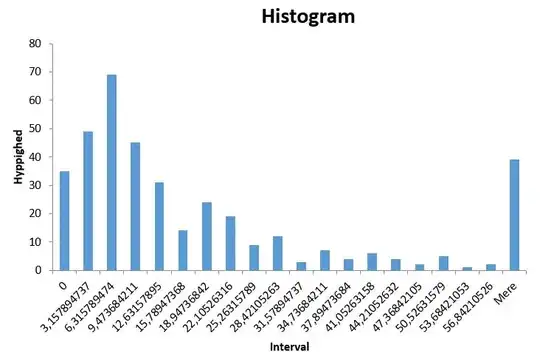Not that strong in statistics, so I need a little help getting started with some data I've gathered.
In my experiment subjects had to perform tasks while I took time for them to complete it. Now, I want to do some t-testing based on various parameters, but.. My data ranges from 0 to 60 seconds. The experiment stopped at 60 seconds, so about 7-8 % of the data is '60'. Same amount around 0 seconds. Rest is highly skewed towards right with an overall mean time at 16,89 seconds.
So my question is: Can I do a t-test on this, when the data is so skewed? If not: What test can I do to check if groups/parameters has an effect?
I also have two different groups with an assumption that they're different (p < 0.05), but same problem again. The data is not normalized.
Could a Mann-Whitney U test be suitable for this?
Sample size: ~380
I've attached a picture of the histogram. X-values is time, Y-values frequency.
I've tried to do a log10 transformation. Before that I removed the 60's, since those are not actual times of completion. When I do the log10 then the first group (sample size ~380) is somewhat normalized:
http:// imgur. com/XDEv74V
But the group for which I try to do the t-test is not (sample size 52):
http:// imgur. com/pfrAV8H
(cant upload 2+ pictures due to reputation < 10)
The two-tailed t-test of difference in variance gives a p-value much lower than 0.05. But can I count on this being correct on a log10 with only one of the samples being "normalized" ?
I've done the wilcox.test (Mann-Whitney-Wilcoxon test) in R and i get the following results:
Rank: W = 13840, p-value = 0.001673
Signed: V = 895.5, p-value = 0.5861
What's the difference between rank and signed?
